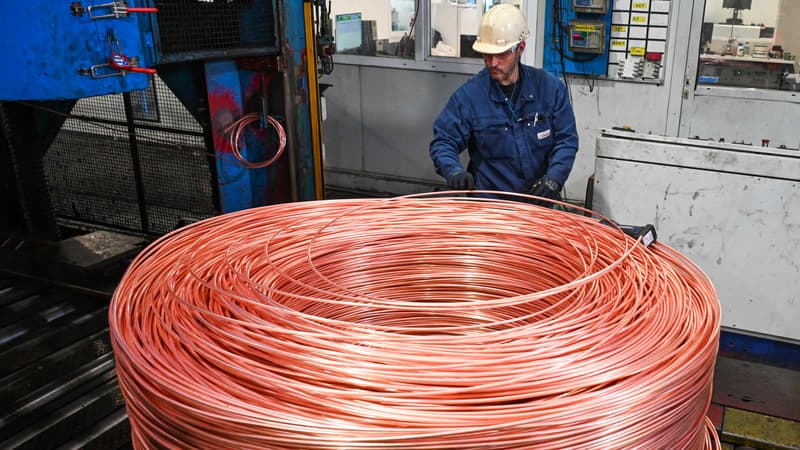Copper hit a new record on Wednesday on the London Metal Exchange (LME), driven by warming relations between China and the United States and recent concerns about global production capacity.
The ton of copper on the LME rose to $11,143, surpassing its previous record from May 2024, of $11,104.5, and raising the rise of the red metal to more than 25% since the beginning of the year.
Donald Trump appeared decidedly optimistic ahead of a meeting with his Chinese counterpart, Xi Jinping, scheduled for Thursday to resolve the trade dispute weighing on trade between China and the United States.
Fears of a new escalation of the trade war and its consequences for the growth of both economies “have dissipated for the moment, which benefits base metals,” explains Thu Lan Nguyen, an analyst at Commerzbank.
Widely used in industry for the manufacture of electrical circuits, copper is especially sensitive to the activity of large countries.
China, the largest consumer in the world
But the “spark” that caused the rapid rise in prices of the red metal since September was “the Grasberg mine catastrophe” located in Indonesia, which left several people dead, Giles Plump, StoneX trader, explained to AFP. It is one of the largest mines on the planet with 500,000 tons of copper produced each year.
On September 8, a major slide of wet earth – approximately 800,000 tons of material – invaded the underground mining galleries, blocking access to several areas and trapping seven workers.
Subsequently, the Freeport-McMoRan company (through its local subsidiary) announced the suspension of its activities until the beginning of next year, moving copper ore supply forecasts “from a surplus to an almost balance, and some even predict a deficit that will support prices,” Ole Hansen, an analyst at Saxo Bank, explained to AFP.
This major disruption caused a real shock to global copper supply: production forecasts were revised downwards, contributing to a sharp rise in copper prices.
Structurally, copper also benefits from “the energy transition and the increased energy demand for data centers (AI),” Hansen underlines.
And China, by far the largest consumer of copper in the world, wants to use significant means to develop emerging high technologies in order to transform its industry, senior politicians indicated on Friday when presenting the content of the 2026-2030 five-year plan, reinforcing the demand prospects for this resource.
In its latest annual report on critical minerals, the International Energy Agency (IEA) estimates that global copper consumption will increase from less than 27 million tonnes in 2024 to almost 33 million tonnes in 2035, an increase of 23%.
Source: BFM TV


